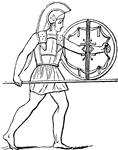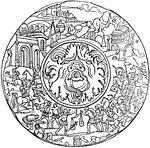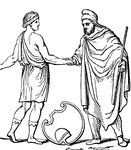Clipart tagged: ‘Buckler’

Acipenser
"Heterocercal tail of Acipenser. a, fulcra; b, osseous bucklers." — Encyclopedia Britannica, 1893

Aegis
The shield of Jupiter, which had been fashioned by Hephaestus. When Jupiter was angry he waved and shook…

Clipeus
"The large shield worn by the Greeks and Romans, which was originally of the circular form, and is said…

Clipeus
"The large shield worn by the Greeks and Romans, which was originally of the circular form, and is said…

